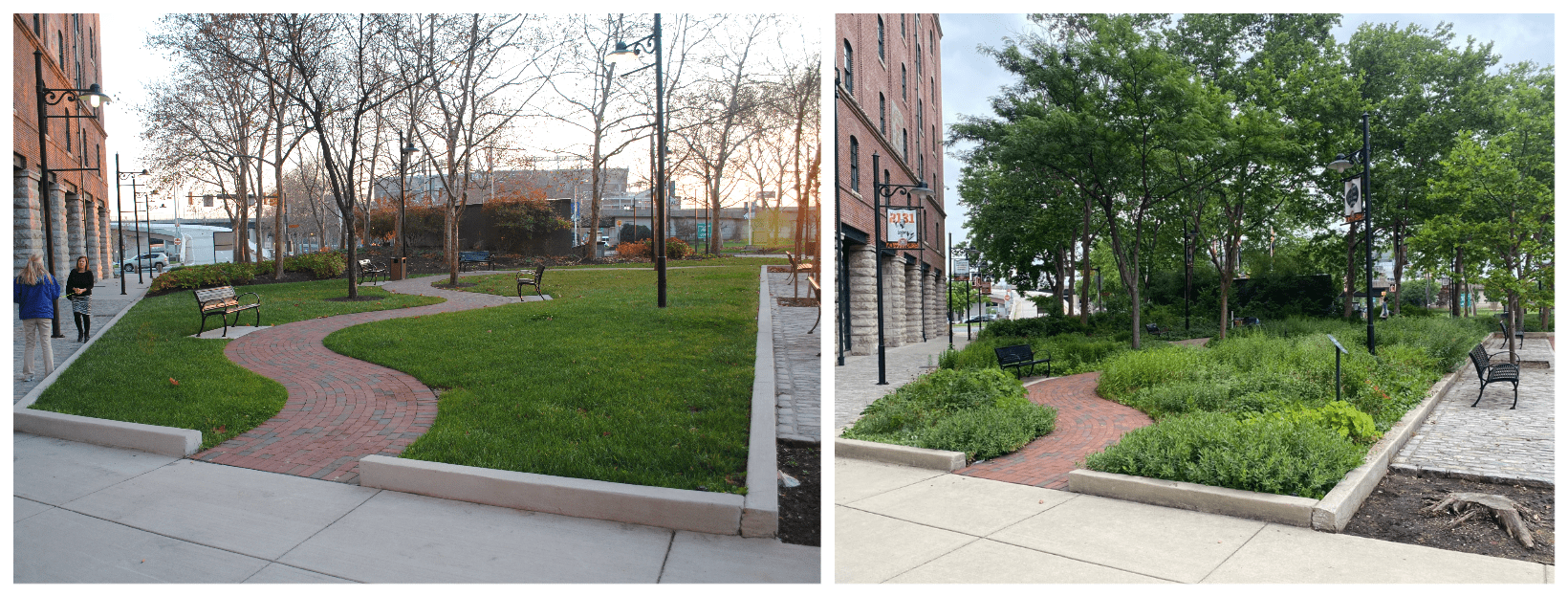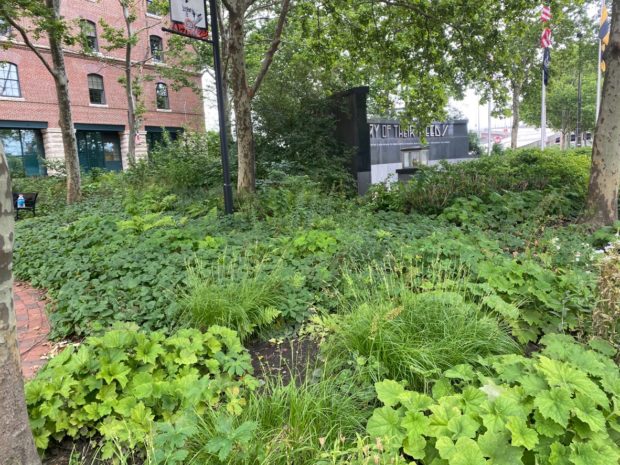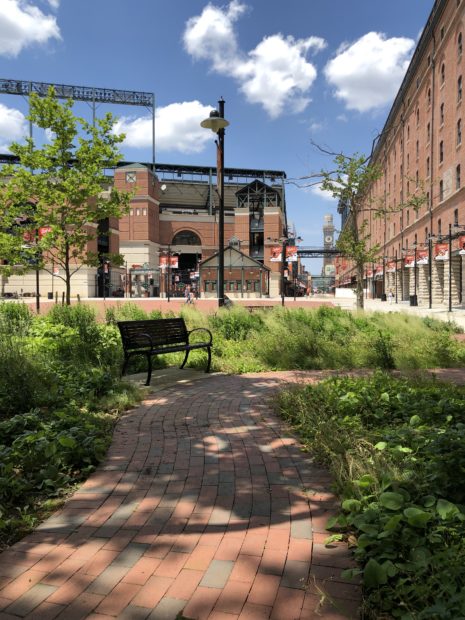We have much more to do and your continued support is needed now more than ever.
The Oriole Garden: Six Years Later

In 2016, the Oriole Garden at Camden Yards was just a typical area of flat lawn. It was a space that visitors to the stadium would not think twice about as they walked by. Not only was there very little visual interest, but there was also little to support wildlife like bees, butterflies, and birds.
Native plants provide shelter and important food sources to insects, which in turn are important food sources for wildlife, such as the Baltimore oriole, the mascot of Baltimore’s major league baseball team.
Growing together
The Oriole Garden, located at the notable Camden Yards stadium in Baltimore, was created in 2016 through a partnership between National Wildlife Federation, Maryland Stadium Authority, the Baltimore Orioles, and the National Aquarium. The design for this garden was created by Claudia West, and consists of plants native to the Mid-Atlantic region that provide valuable habitat and showcase alternative sustainable landscape practices.
Now, six years later, the garden has fully grown and is a visually dynamic space of diverse textures and colors that catch people’s eyes. There is a wide array of wildlife who benefit from this space, alongside people who use the space to connect with nature in an urban setting. From the light pink, uniquely shaped petals of the Eastern beebalm (Monarda bradburiana), to the white turtle head (Chelone glabra) which is the host plant of the Baltimore checkerspot, and even common milkweed (Asclepias syriaca) host plant of the monarch butterfly has popped up separate from the original design.

The use of native plants, such as the ones in the Oriole Garden, offer numerous environmental benefits and requires less long-term maintenance. Their extensive root systems can absorb great amounts of rainfall, help manage stormwater, and reduce flooding risks.
These plants are adapted to their local environment and therefore are resilient to environmental challenges and do not require synthetic fertilizers or pesticides. Eliminating the use of these chemicals results in healthier watersheds, which is important because the Oriole Garden is in close proximity to Baltimore’s Inner Harbor which leads directly to the Chesapeake Bay.

Baltimore Orioles fans passing by the garden on their way to a baseball game can also learn about the importance of native plants through signage and gain inspiration for their very own native plant garden.
According to the Maryland Stadium Authority, over one million fans have attended home games at Camden Yards so far this season, meaning the impact of the Oriole Garden is far greater than just the space itself.
It has been a long journey turning a stagnant area of grass into a dynamic native plant garden that supports valuable wildlife like pollinators.
From design, installation, and ongoing maintenance, the Oriole Garden is a fantastic demonstration of what gardening for wildlife looks like in an urban environment.
To learn more about the Oriole Garden at Camden Yards, visit Garden for Wildlife, Real-life Wildlife Habitat Gardens.
Interested in volunteering?
Are you interested in volunteering at the next Oriole Garden maintenance day? Please contact Natalie Cohen at CohenN@nwf.org for more information.





















